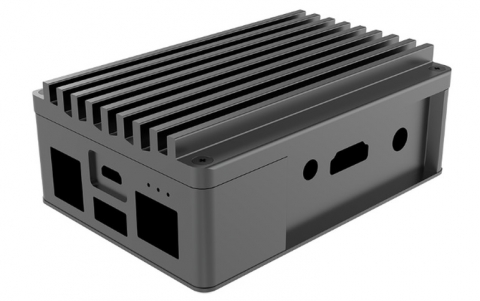
Fujitsu Develops Distortion-Compensation Circuit For Fiber-Optic Transmission Systems
Fujitsu Limited, Fujitsu Laboratories Limited and Fujitsu Research and
Development Center Co., Ltd. of China jointly announced their development of a digital signal processing algorithm to compensate for waveform distortions in signals transmitted by fiber-optic cables in long-haul transmission systems of 100 km or more.
Wavelength division multiplexed (WDM) fiber-optic transmission systems that
can carry 100 Gbps per wavelengthmore than ten times existing levelsare
expected to go into volume commercial deployment around 2012, and R&D
efforts are progressing to enable continuous capacity increases in the
future.
When transferred over long distances of hundreds of kilometers by fiber-optic lines, ultrafast signals carrying data at speeds of 100 Gbps or more suffer from waveform distortion caused by nonlinear optical effects, making it difficult for the signal to be correctly received. This has prompted research into nonlinear compensation technology, which can restore the signal received with distortion to a clean waveform. Using conventional methods, however, the implementation of nonlinear compensation technology would require massive circuits with more than 100 million logic gates, and chips that include such compensation circuits are only expected to become feasible around 2020. Reducing the scale required of such circuits, therefore, has been a pressing issue.
In September of last year, Fujitsu developed a technology that would simplify these circuits, making them commercially viable as early as 2015. With the relentless growth in network traffic, however, ongoing improvements, in terms of circuits that are more compact and consume less electricity, are still needed. The Fujitsu team has now developed a new signal-processing algorithm that, while retaining the distortion-correction performance of the technology developed last year, slashes the number of stages required in a distortion-compensation processing circuit to about one-seventh current typical levels. Key features of this technology are as follows.
- As a result of approximation analysis, in which signal distortions are expressed as mathematical models, Fujitsu has been able to formulate distortion components that previous technologies have overlooked.
- Additional refinements to the above numerical modeling made it possible to develop an efficient design for accurate compensation, implemented in a small circuit. Adding this compensation circuit to the technology that Fujitsu developed in September last year resulted in a leap forward in the accuracy of distortion compensation and greatly reduced the number of circuit stages and overall size.
Compared to conventional technology in widespread use in literatures, the size and power requirements of the new circuit are reduced by approximately 85%, and are reduced by approximately 50% compared to circuits previously developed by Fujitsu.
For long-haul transmission systems that are used in the trunk-line networks of telecom carriers and networks that tie together large datacenters, the new circuit will enable ultrafast transmission systems operating at over 100 Gbps per wavelength to be more compact and consume less power than existing systems.
Some of this research was conducted as part of the "Universal Link Project R&D" sponsored by National Institute of Information and Communications Technology (NICT), Japan. Details of this technology are being presented at the 37th European Conference and Exhibition on Optical Communication (ECOC2011), opening September 18 in Geneva.
This technology is expected to be used in the next generation of long-haul optical transmission systems running at speeds in excess of 100 Gbps that are on track for implementation by around 2015. The technology is also being studied for potential applications in high-capacity short-range networks, such as those used in datacenters and access networks.
When transferred over long distances of hundreds of kilometers by fiber-optic lines, ultrafast signals carrying data at speeds of 100 Gbps or more suffer from waveform distortion caused by nonlinear optical effects, making it difficult for the signal to be correctly received. This has prompted research into nonlinear compensation technology, which can restore the signal received with distortion to a clean waveform. Using conventional methods, however, the implementation of nonlinear compensation technology would require massive circuits with more than 100 million logic gates, and chips that include such compensation circuits are only expected to become feasible around 2020. Reducing the scale required of such circuits, therefore, has been a pressing issue.
In September of last year, Fujitsu developed a technology that would simplify these circuits, making them commercially viable as early as 2015. With the relentless growth in network traffic, however, ongoing improvements, in terms of circuits that are more compact and consume less electricity, are still needed. The Fujitsu team has now developed a new signal-processing algorithm that, while retaining the distortion-correction performance of the technology developed last year, slashes the number of stages required in a distortion-compensation processing circuit to about one-seventh current typical levels. Key features of this technology are as follows.
- As a result of approximation analysis, in which signal distortions are expressed as mathematical models, Fujitsu has been able to formulate distortion components that previous technologies have overlooked.
- Additional refinements to the above numerical modeling made it possible to develop an efficient design for accurate compensation, implemented in a small circuit. Adding this compensation circuit to the technology that Fujitsu developed in September last year resulted in a leap forward in the accuracy of distortion compensation and greatly reduced the number of circuit stages and overall size.
Compared to conventional technology in widespread use in literatures, the size and power requirements of the new circuit are reduced by approximately 85%, and are reduced by approximately 50% compared to circuits previously developed by Fujitsu.
For long-haul transmission systems that are used in the trunk-line networks of telecom carriers and networks that tie together large datacenters, the new circuit will enable ultrafast transmission systems operating at over 100 Gbps per wavelength to be more compact and consume less power than existing systems.
Some of this research was conducted as part of the "Universal Link Project R&D" sponsored by National Institute of Information and Communications Technology (NICT), Japan. Details of this technology are being presented at the 37th European Conference and Exhibition on Optical Communication (ECOC2011), opening September 18 in Geneva.
This technology is expected to be used in the next generation of long-haul optical transmission systems running at speeds in excess of 100 Gbps that are on track for implementation by around 2015. The technology is also being studied for potential applications in high-capacity short-range networks, such as those used in datacenters and access networks.





















